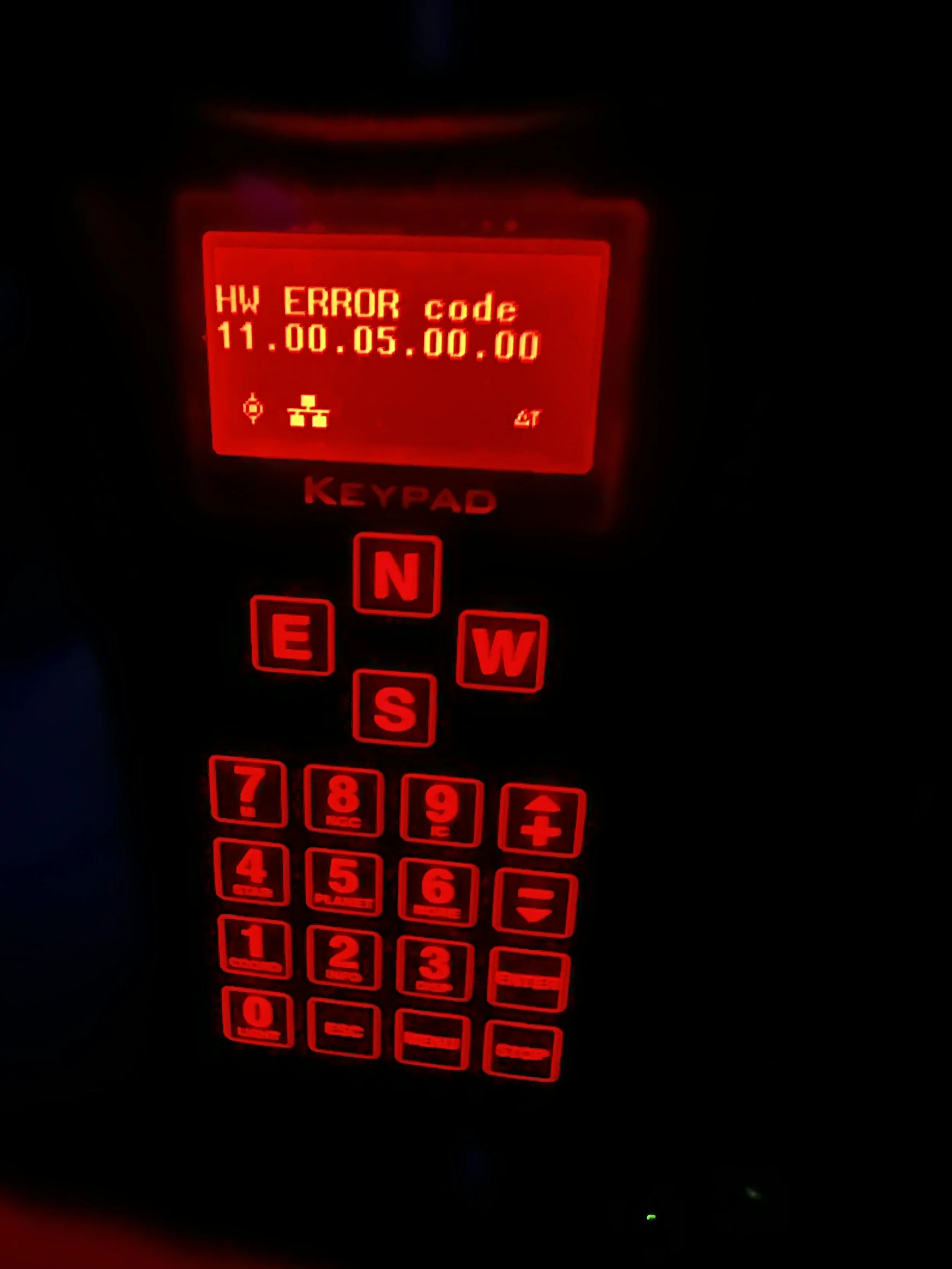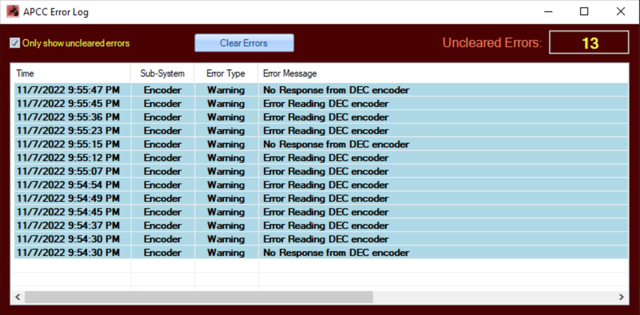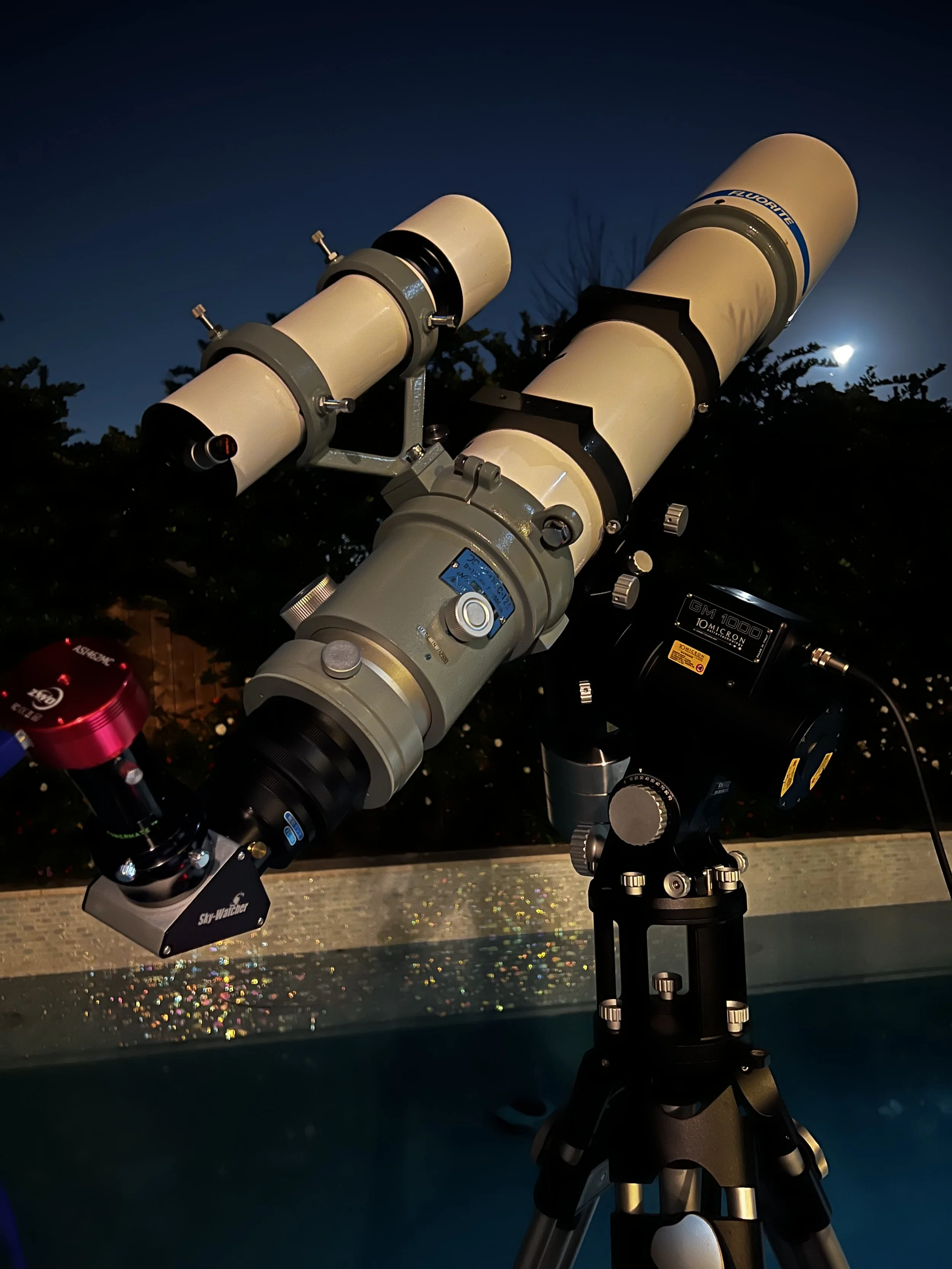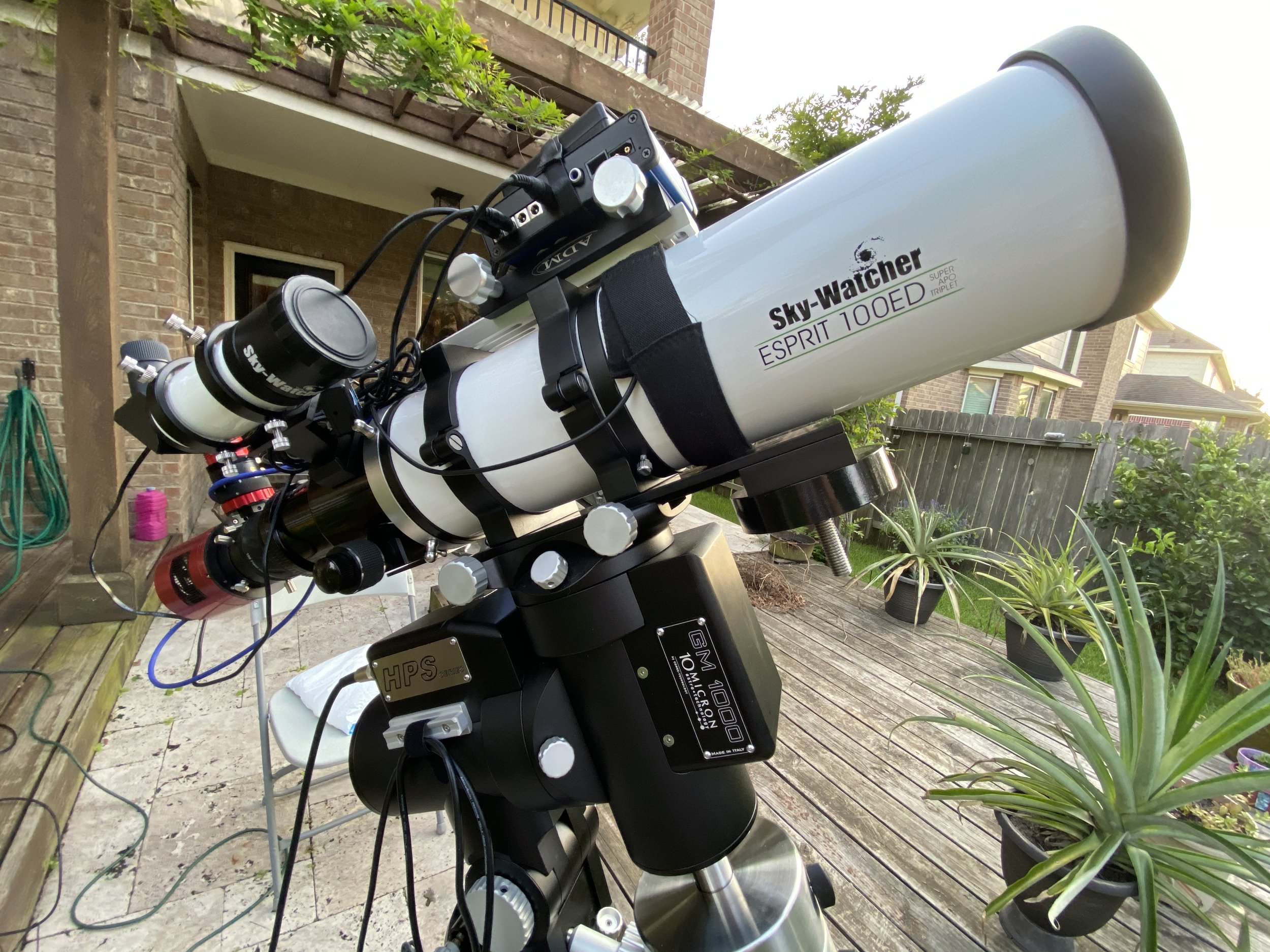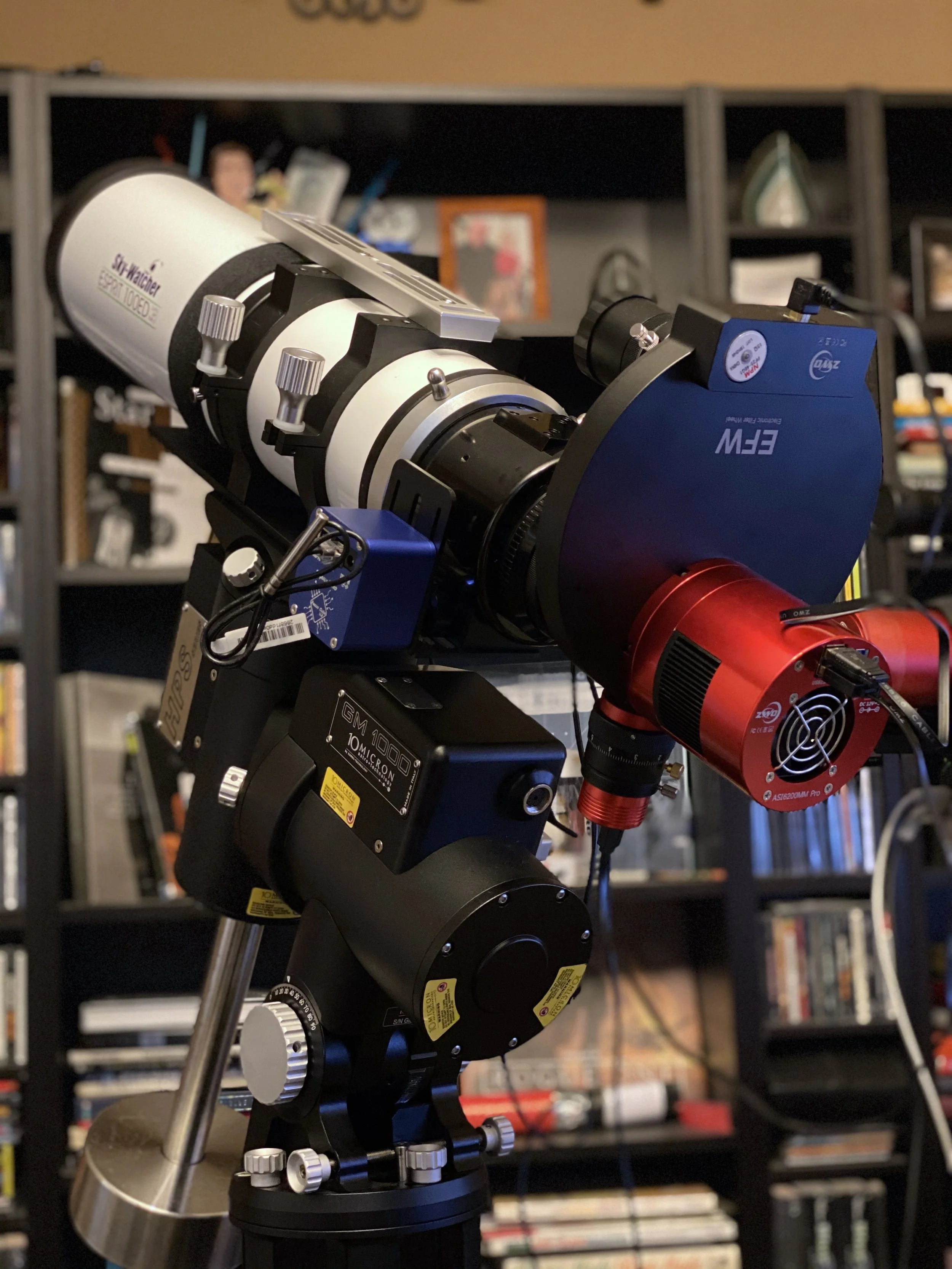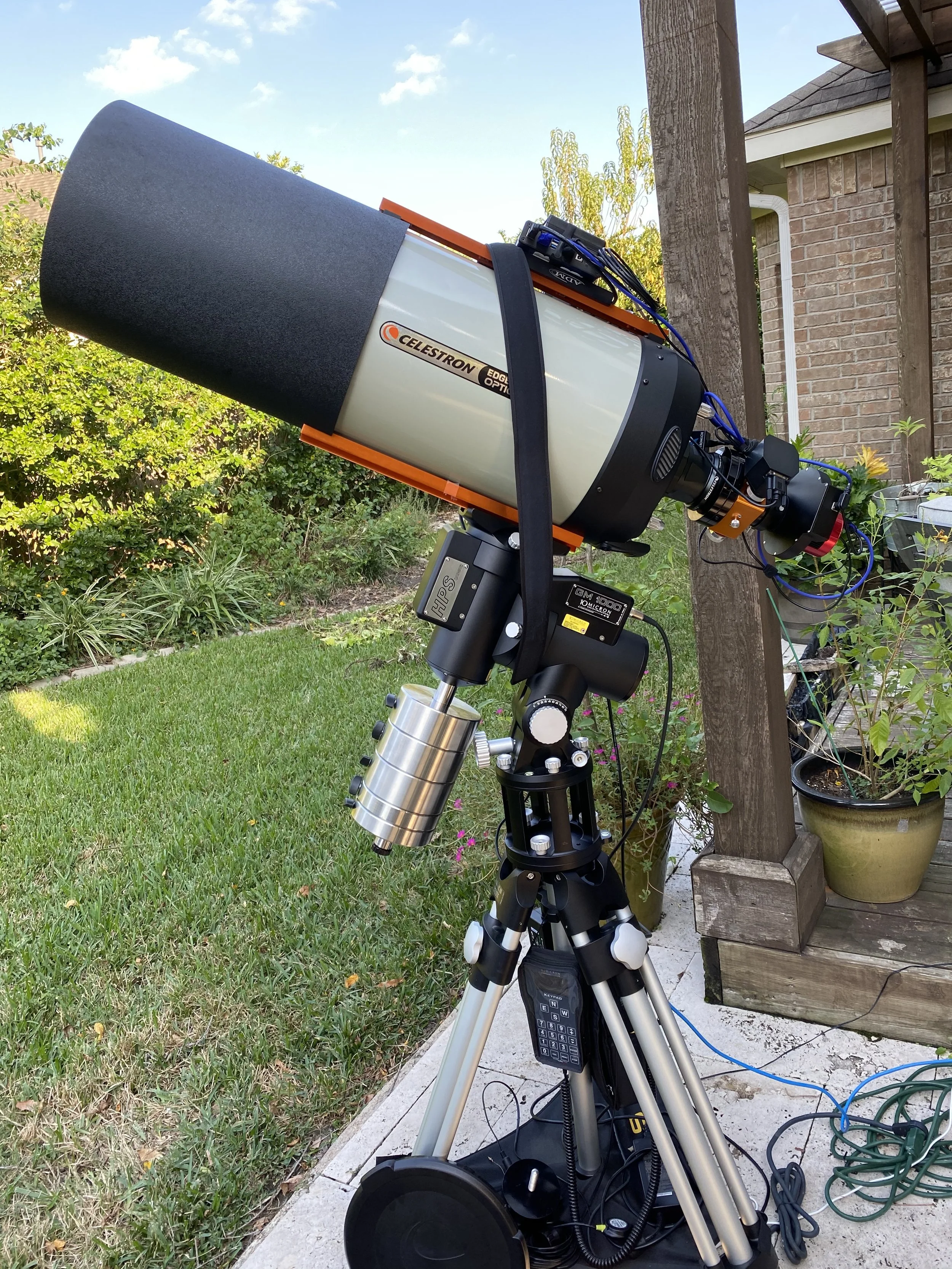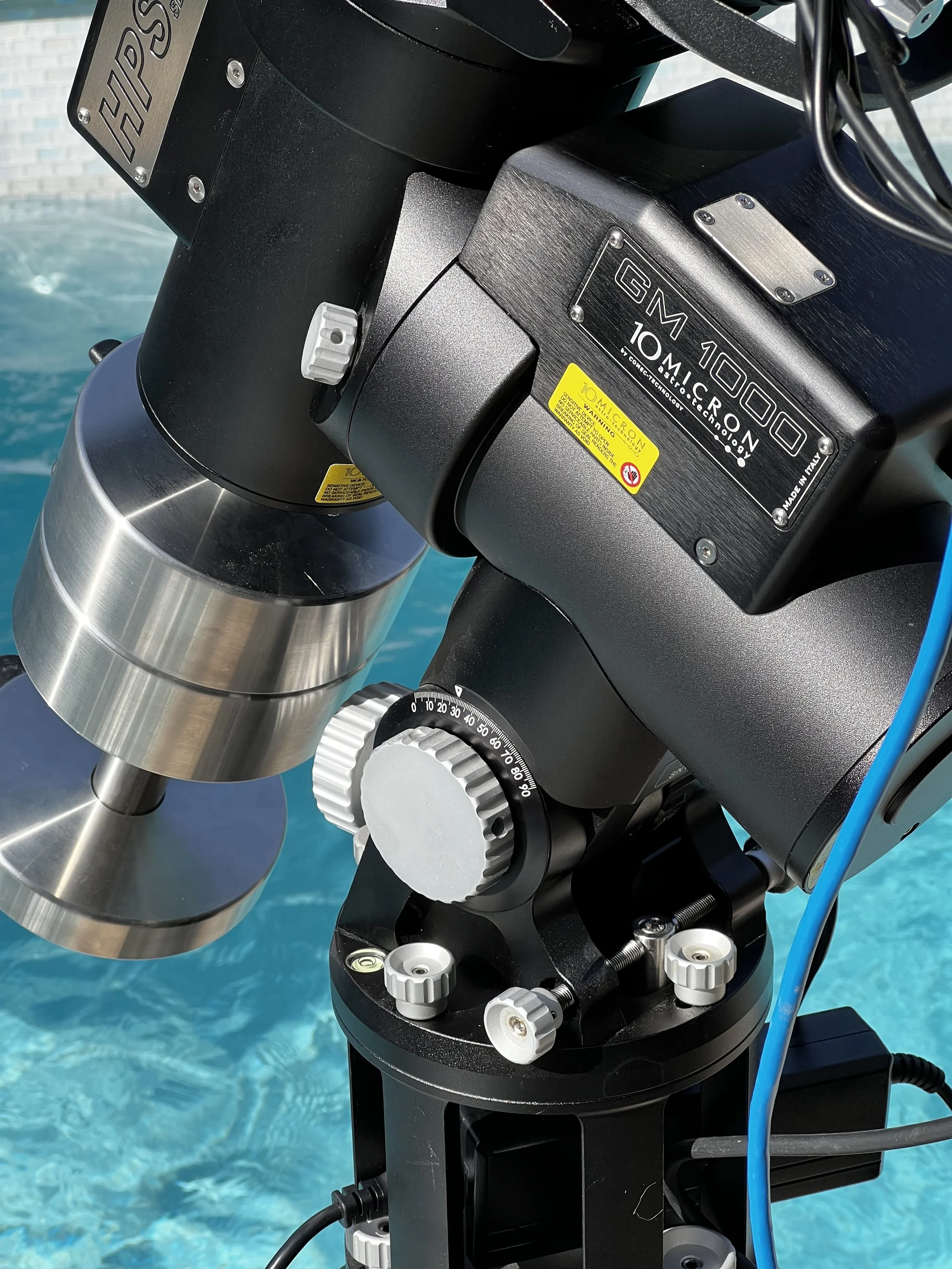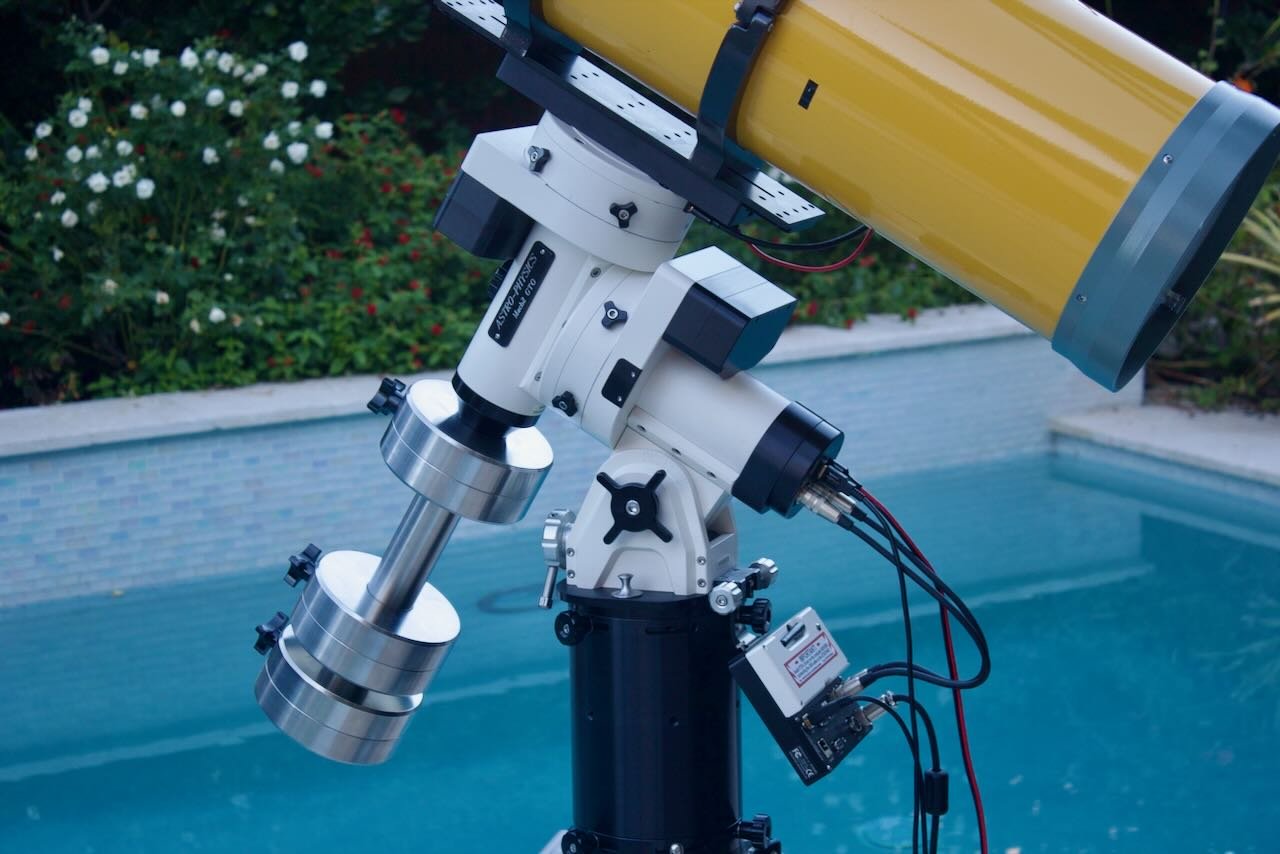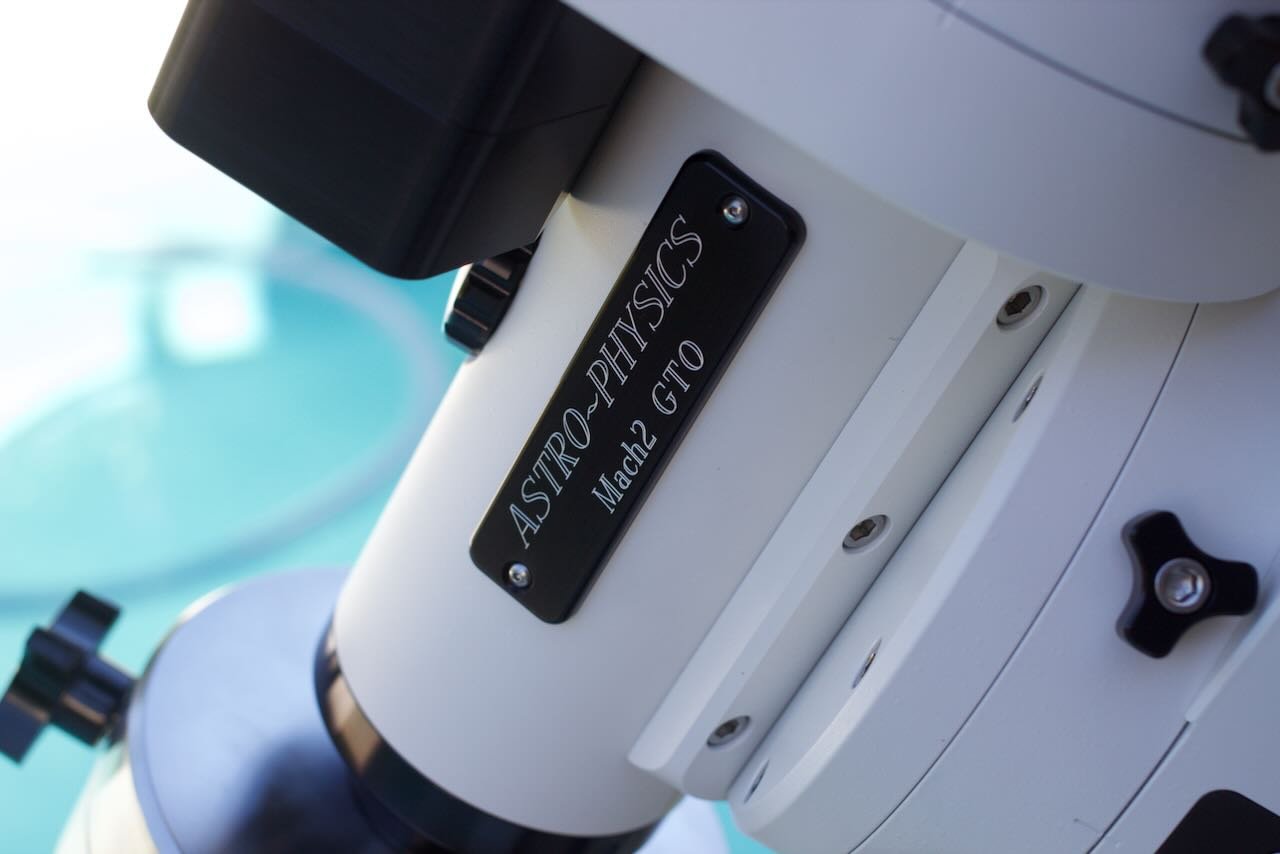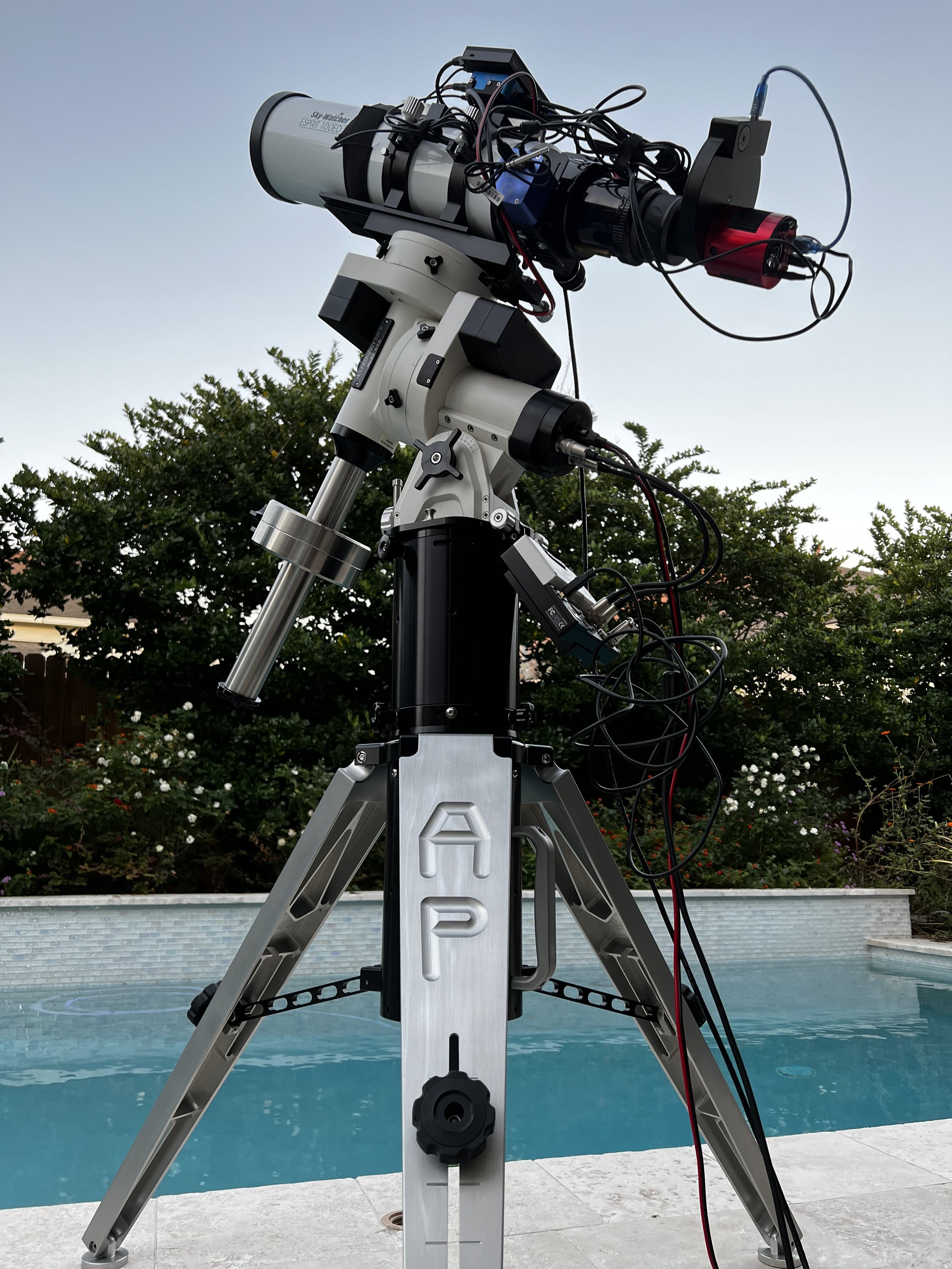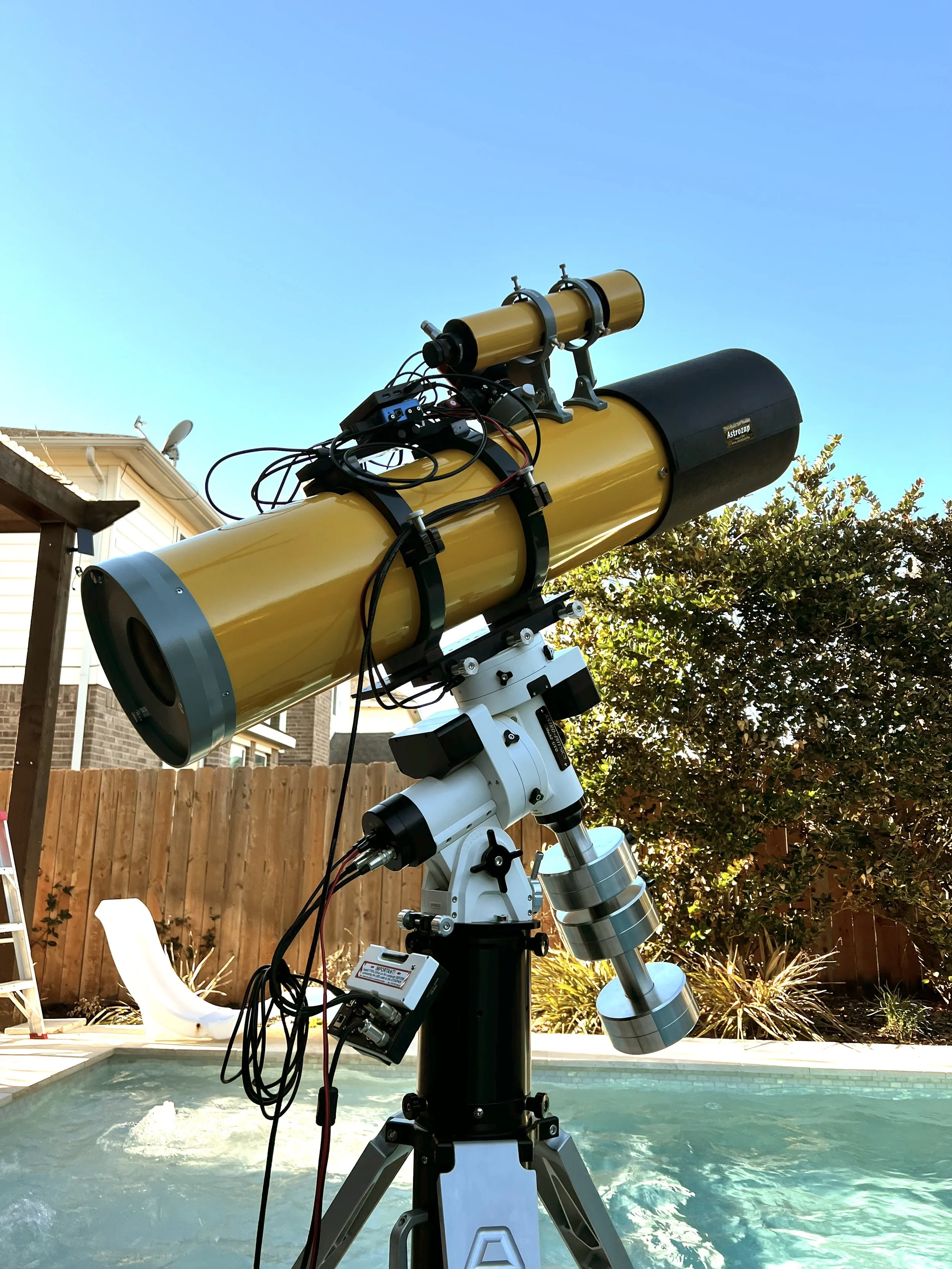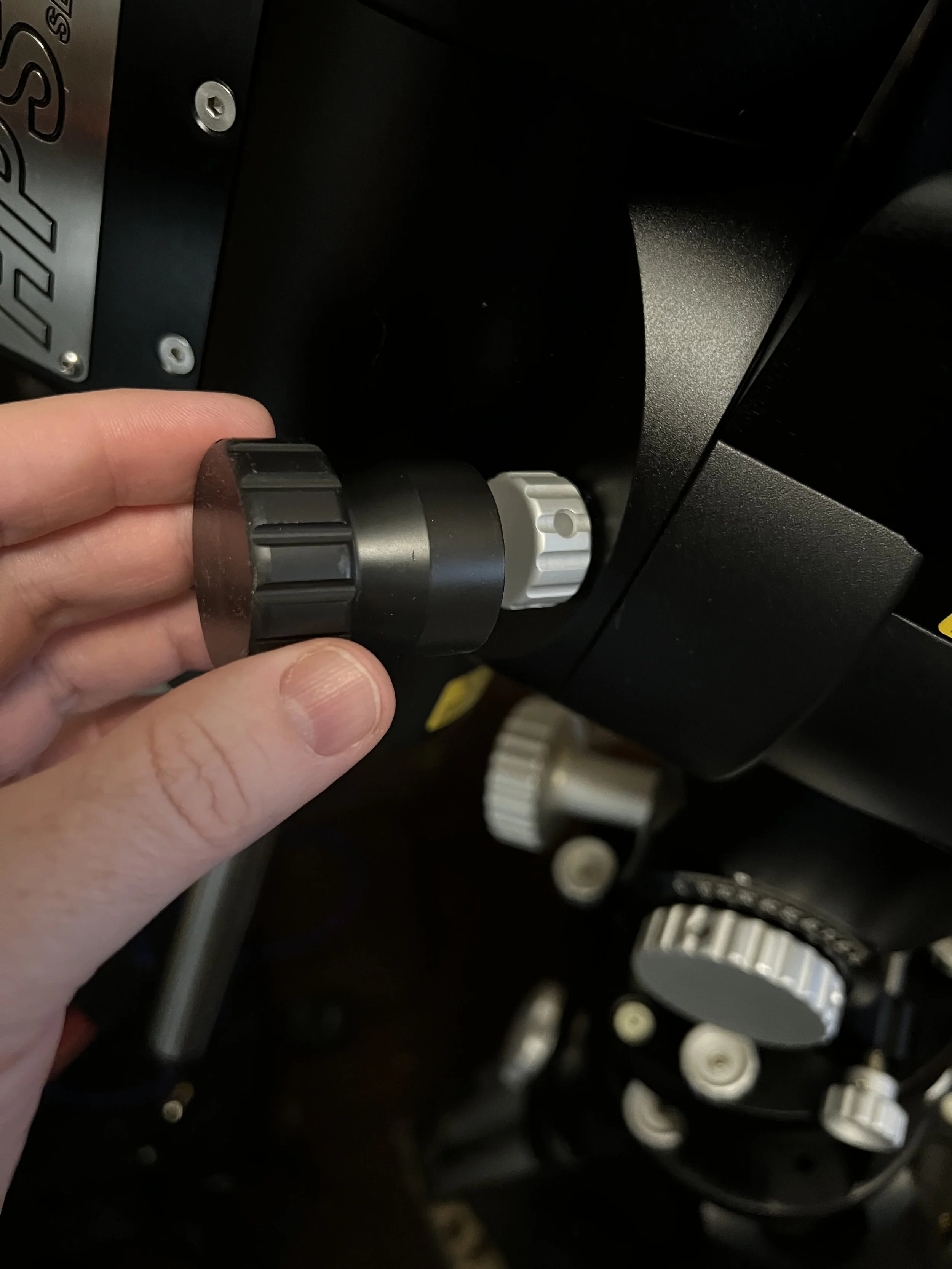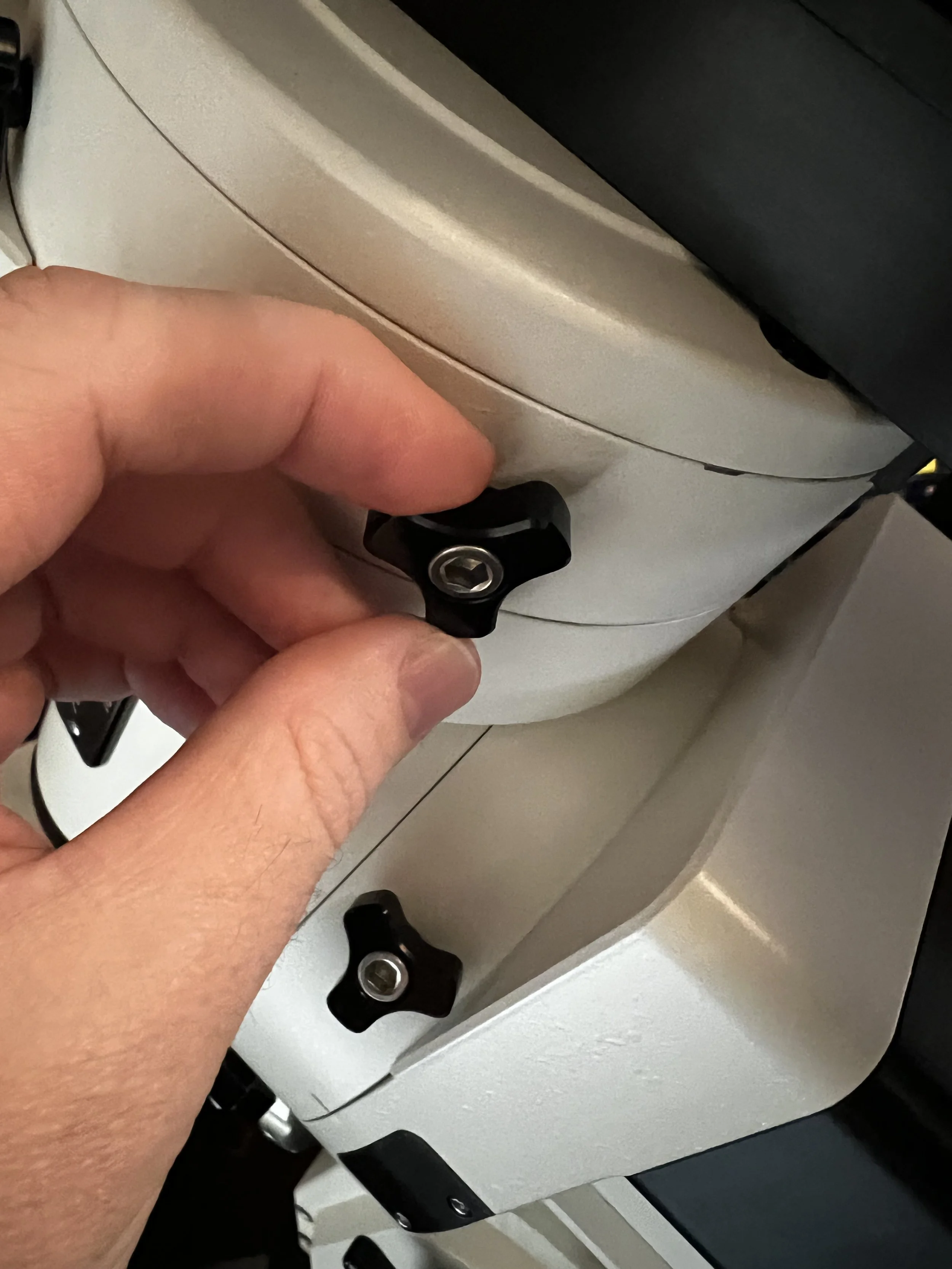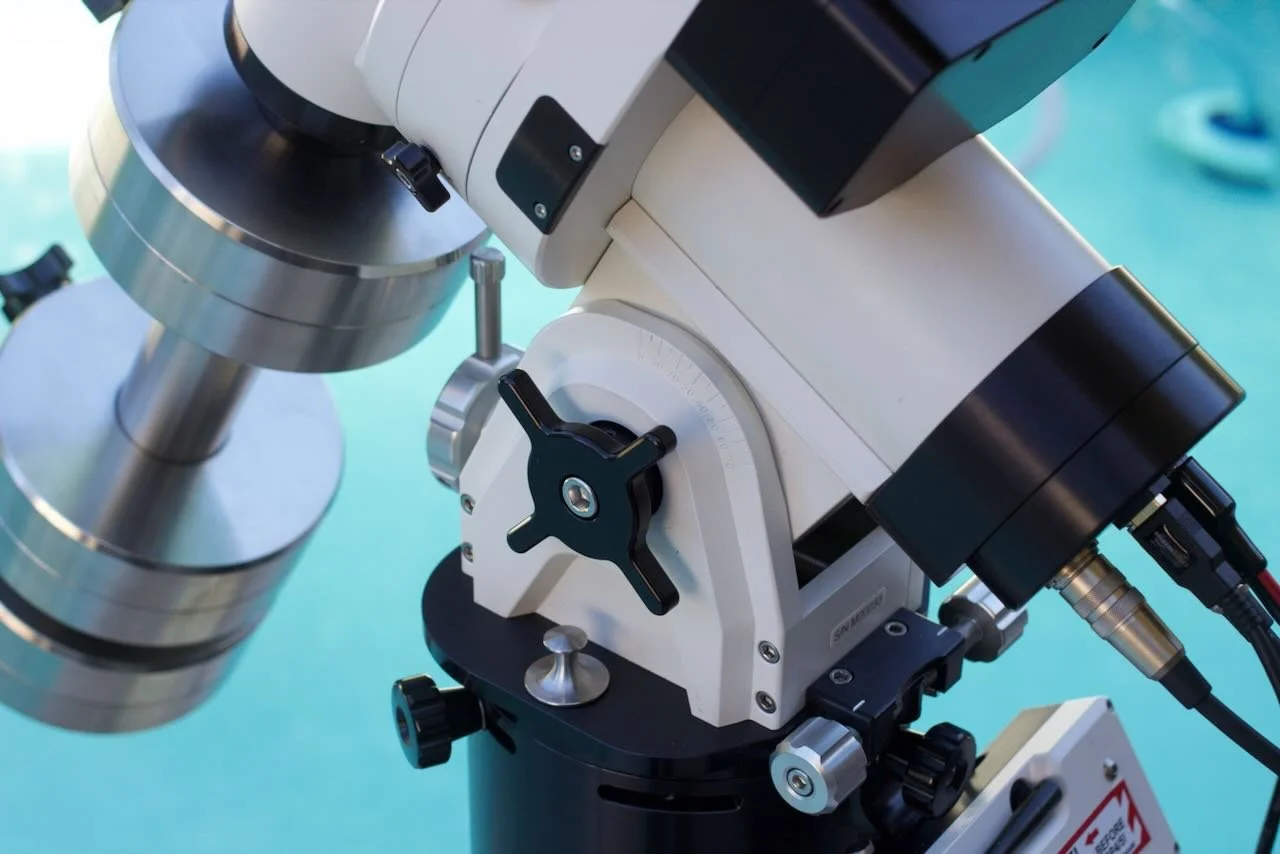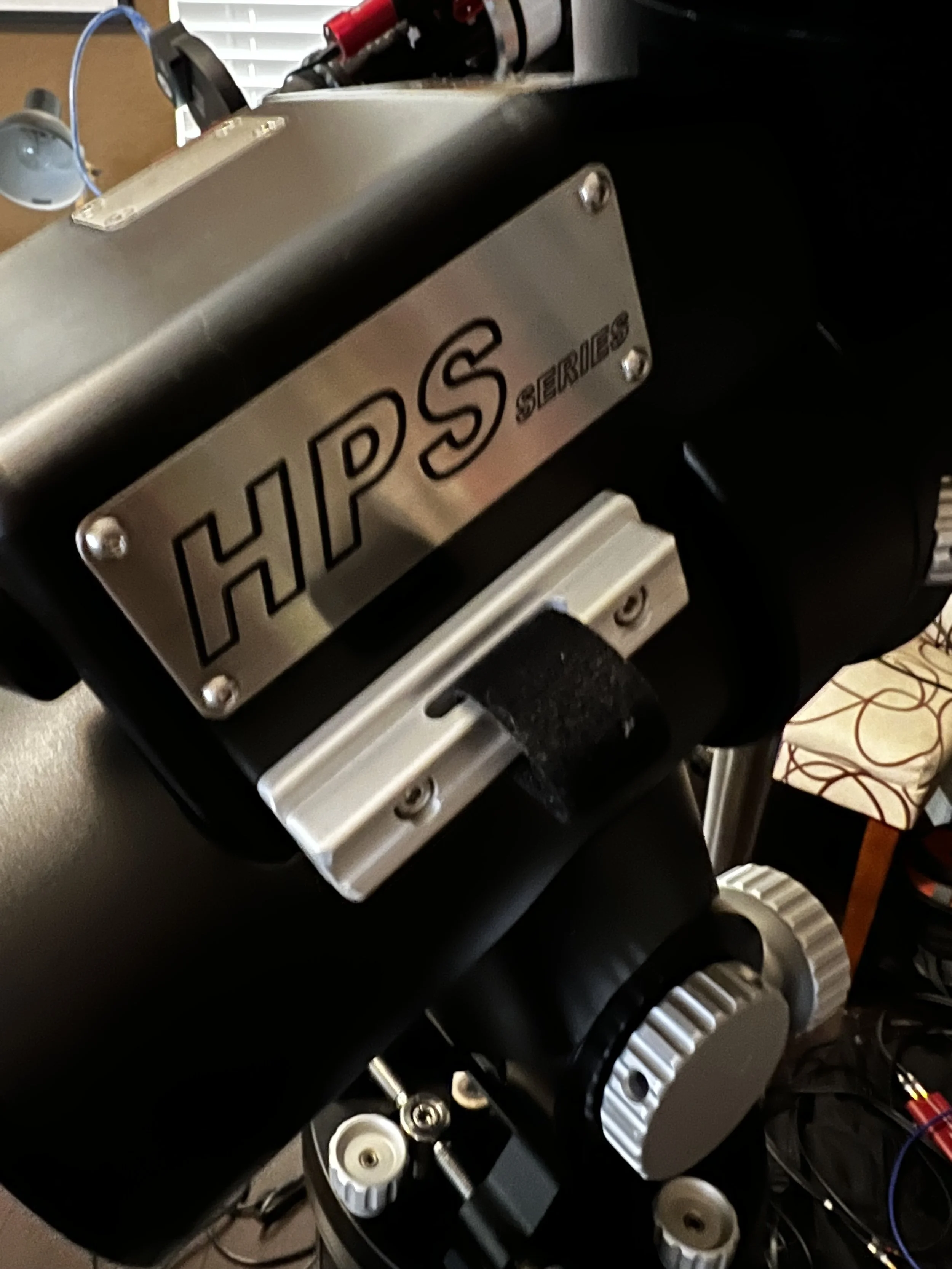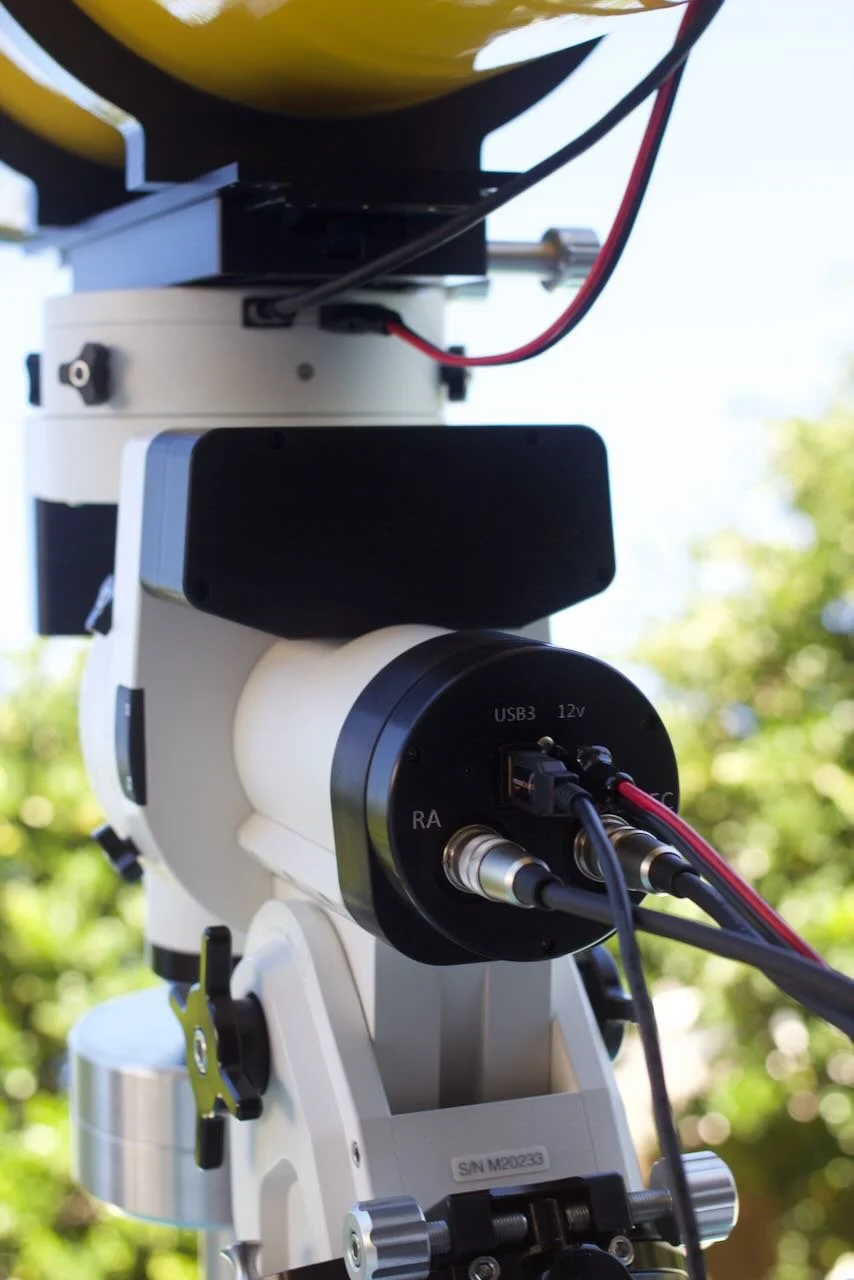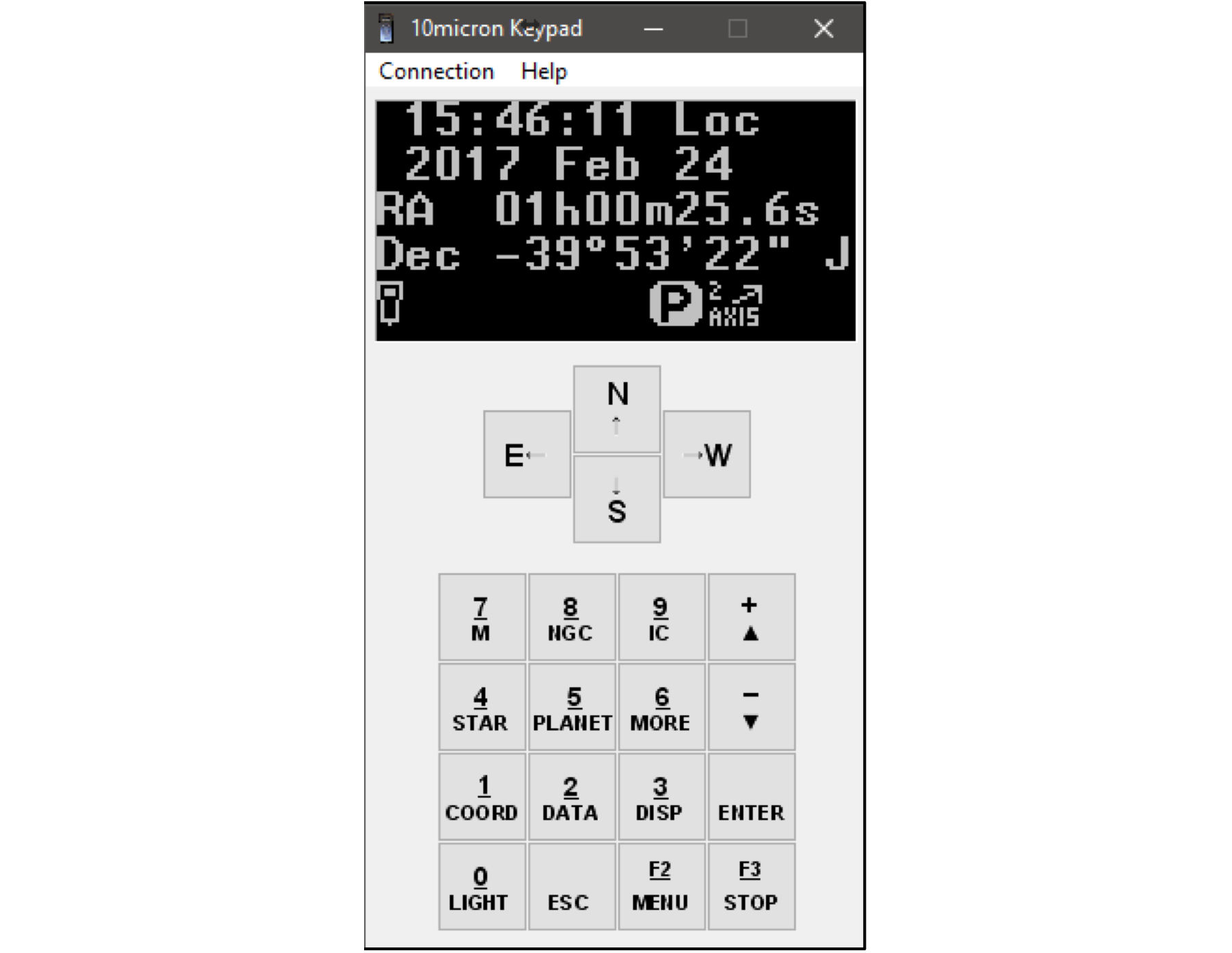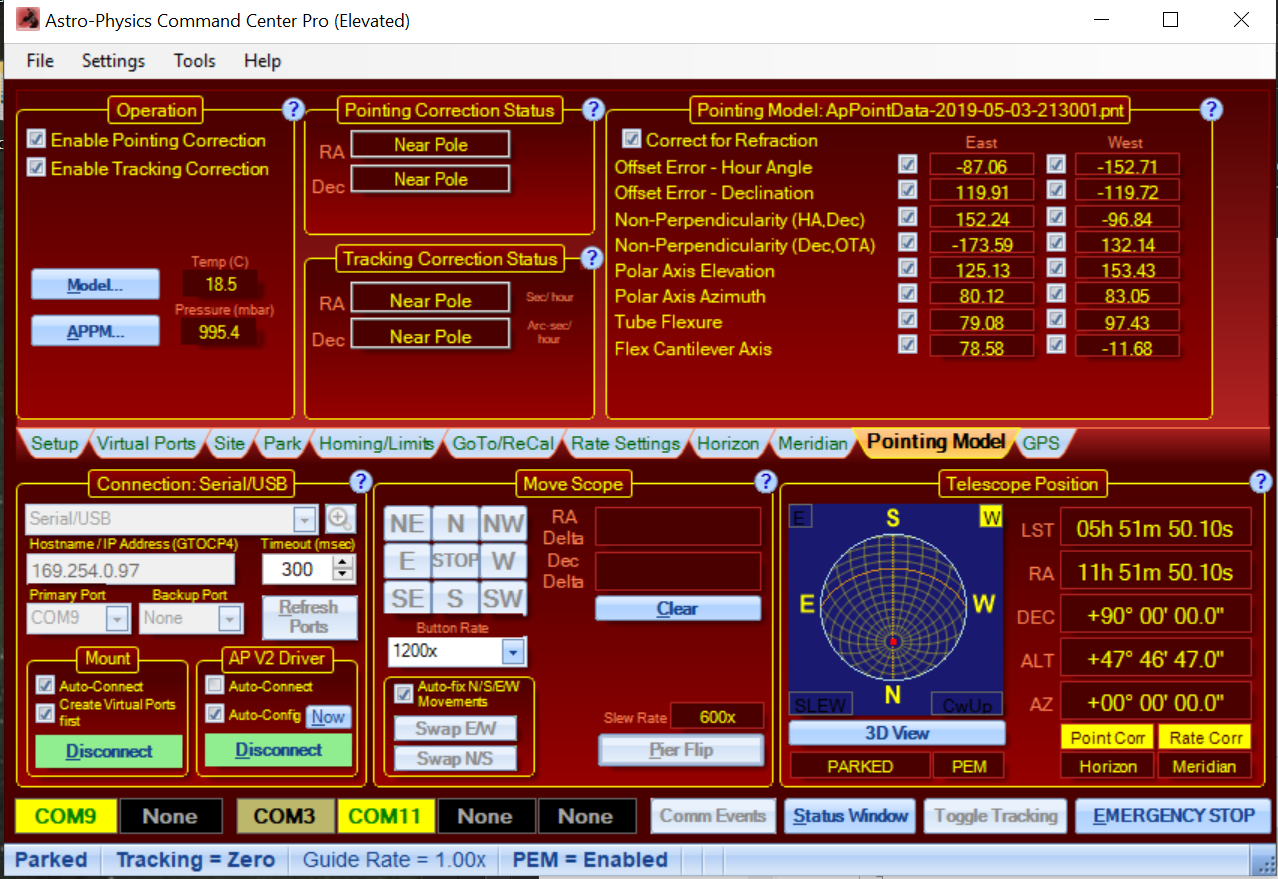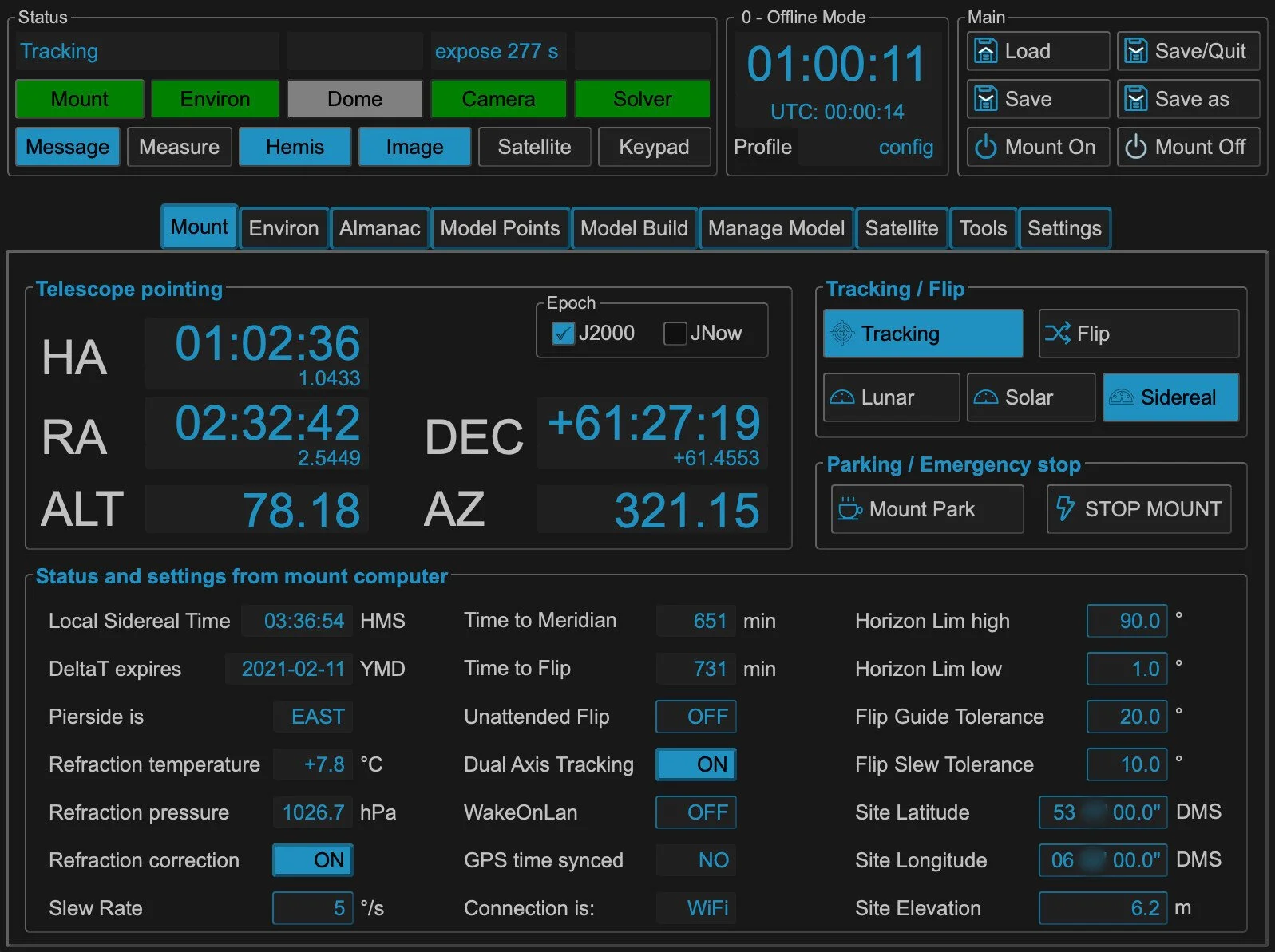I’m in the unique position of owning two premium mounts. The Astro-Physics Mach2GTO and a 10Micron GM1000HPS. I’m going to attempt to cover them in a fair way based on my experiences with both. Initially I thought about doing a review and declaring a winner, but in all honesty it’s not going to be fair to either of these companies to have someone win and someone lose. Both companies take pride in what they make and sell, they both have their strengths and weaknesses. These two mounts are at the entry level of premium mounts. Both are the lowest capacity mounts the two companies make, but because they are premium, they land at a price point that many budding astronomers/astrophotographers hope to one day stretch their budgets to afford. In this writeup I’m going to cover the purchase, support/service, hardware, software, and practicalities of these mounts versus each other and more common mass produced mounts. I hope to provide enough information here that a user can make their own decision on which mount is right for them. In addition, areas where I’m critical of design or software decisions made by each respective company, I hope are taken as constructive criticism where they can learn and improve as necessary.
Purchase Experience
Until the COVID pandemic hit, it was relatively easy to purchase a 10Micron mount. They were readily in stock, and all it took was a call to anyone who sells them to get one delivered within a week. I purchased and received my mount within about 7 days originally from Deep Space Products. With lapses in production thanks to supply chain issues, wait times have increased to around 6 months. While much longer than usual, this still pales in comparison to purchasing an Astro-Physics mount.
Because Astro-Physics is so well known and coveted by many astronomers and astrophotographers, you essentially have to get onto a wait list for anything they sell. These things are not mass produced, and they make them in batches along with the other mounts they offer. So there’s high demand, and limited manufacturing capacity. The Mach2 was announced around three years ago, and having not yet purchased my 10Micron mount, I saw the announcement, and within a week decided to get on the waiting list. In June of 2022, after waiting three years and having already purchased the 10Micron, I received an e-mail from AP that my name had come up. I had a week to decide whether or not I wanted to purchase the mount and if I did it would be built and sent to me around an October 2022 delivery window. I was actually shocked to get this call, and because of the rarity of these things, and the fact that I have an observatory being built in the next year, I decided to go ahead with getting one.
In general it’s certainly easier to get a 10Micron mount. So that might play a big factor into which option you choose. Having not purchased any of AP’s larger mounts, I have no idea what the wait times are like for those units, but I suspect the Mach2 is likely one of their most popular mounts being right at the entry level of the lineup.
Service Experience
The first topic I want to cover here is service. Despite these being premium mounts that you would expect to work flawlessly, they are indeed built by hand. Because of this, they can have potential issues from time to time. My experience isn’t unique, but most don’t suffer from day one issues. In my case, both mounts arrived to my home seemingly in working condition. Once I got them outside for first light, this is where I found out they both had an issue.
10Micron
My 10Micron was purchased a few years ago, and it arrived during the winter when it was cold outside. I had practiced setting it up inside my home where it worked flawlessly. Once I got it outside into the cold air, it would function for about an hour until things cooled down in the hardware (close to freezing temps), and the mount started to seize up when slewing. I suspect there was something with a tight tolerance that began to bind at cold temps. A cryptic warning message pops up on the hand controller to tell you you’ve encountered some numerical error. There’s no indication of what the error number represents, and 10Micron does not publish the error code messages. One thing you will quickly learn about 10Micron, is that they as a company are very inaccessible to the end user. While they do offer their own message board (mount serial number required to join), none of their people frequent the message board. This makes getting direct feedback on driver issues, or other problems almost non-existent. There is a large base of users that are extremely helpful in almost every regard. The users really make owning the mount feel like a communal experience. They are quick to offer help in any regard from complex setups to simple setups. But for actual issues with your personal mount, it’s intended that you get help from your region’s support person.
This mount was purchased new from Ed Thomas at Deep Space Products, he handles all North American service issues for 10Micron. A quick call to Ed, late in the evening and he tried to help me troubleshoot the issues. After a few days of back and forth with no solution, I had to send the mount head back to him where he replaced some part, and returned the mount to me in working condition. It has since worked flawlessly until this past fall.
During one night of imaging about two months ago the mount seized up and gave me another error code. I sent an e-mail to Ed relaying the error code. This time it took about a week or so to get a response. Ed is unbelievably helpful, but he is a one man show. He’s now running a remote observatory business, servicing mass produced mounts from Pegasus Astro, and still maintaining U.S. support for 10Micron, so a delay in his response time can only be chalked up to the fact that he’s really busy these days. Through a few more e-mails, it was determined with 10Micron that whatever the issue was, it needed to be fixed in Italy by 10Micron themselves. At no expense to me, the mount head, cables, and computer were boxed up and shipped to 10Micron. It took about 4 weeks before the mount was fixed and returned. After repeatedly asking what the error code was and getting no response (in hopes to avoid the issue in the future), the mount head arrived with a sheet of paper indicating there was a main board failure and it was replaced.
No one but 10Micron knows what these error codes mean.
One thing is clear to me during this process. 10Micron does not want you to know the inner workings of their mounts, nor do they want you to understand what these error messages reveal about those inner workings. Despite Ed’s best attempts to help troubleshoot, he ultimately could not repair the mount which meant it had to go back to 10Micron. A long wait ensued since the mount has to clear customs and be worked on overseas. But it was free of charge, and only took my time. If you live in Europe, I suspect this is a much easier process.
In an ideal world, where your mount is working as expected, the closed system of the 10Micron is meant to be maintenance free for at least 7 years before any service is expected. You’re not meant to tinker with it, as it should just work. This is a very different philosophy from the AP mount. If you’re the type of person that doesn’t want to mess with the hardware, this might be the mount for you.
Astro-Physics
Similar to my 10Micron experience, my Mach2 mount arrived and seemed to work fine, except that it exhibited a loud binding noise when moving only in one direction. While I could have called AP, they have a Groups.io site where other AP users can interact with each other as well as company figures including Roland Christen, the owner and founder of AP. AP commonly refers to users of its products as “family”, and it is indeed a very tight nit group. AP is known around the globe as one of the top companies for producing some of the best mounts and telescopes in the business. They even sent me a thank you card signed by the whole staff at AP. This was a very thoughtful gesture.
On to the issue…A post of the problem I encountered to the Groups.io board got an almost immediate response from Roland himself. Wow, I’m talking to the owners of AP, the main man in charge. How cool is it that he’s that accessible. Not only that, but he’s extremely involved in the community and clearly has a passion for what he does. After a few back and forth chats, and a recorded video to show him the issue, he Immediately knew what was wrong. Volume up on the video to hear the issue.
Within minutes he had sent me an extremely detailed set of instructions on how to take apart the motor covering, and adjust the belt tension on one of the motors. This was fascinating to see and 100% contrary to the 10Micron process I had experienced which keeps you in the dark. With this quick fix out of the way, I got set up for my first night of imaging.
My first night of imaging seemed to go fine at first. But intermittently throughout the night I started to get encoder errors on the DEC axis, and eventually I started to get motor stalls.
These error messages are very plain to see, and apparently mean exactly what they say.
Another message to the Groups.io board and another AP employee asked me to get in touch with one of the techs at AP the following day. I gave them a call and within an hour he was connected remotely via my TeamViewer app and running commands on the mount to see what was wrong. After a bunch of testing, checking hardware connections, etc, it was determined I had to send the mount head back to AP. I had it boxed up and shipped off the very next day. Free of charge. They received the mount, fixed it in one day by replacing the logic board and DEC encoder as they were unable to determine which part had the problem, and the mount was shipped back overnight. I was up and running again in less than a week. In all, this was a very positive customer experience. If you live overseas and encounter an issue, I would expect the only problem will be overseas shipping and wait times as the mount goes through customs.
The Hardware
Despite the issues I covered above, it’s apparent from the moment you open the boxes to see how well made these mounts are compared to mass manufactured mounts. Similar to expensive audio hardware, these things are first and foremost heavy, indicating that you’ve bought something of quality. Every piece of metal is machined, nothing is a cast mold. Even the counterweights are machined out of blocks of steel.
The other thing that is apparent to me right out of the box, especially when I opened my Astro-Physics mount for the first time, was that Roland and team take the functionality of their mounts to the extreme, and have some very thoughtful touches that the 10Micron lacks. This is not an indication of the 10Micron being poorly made. It’s just that 10Micron seems to be content with an older design that hasn’t been updated in years despite some obvious issues. Not resting on their laurels, Astro-Physics has taken the opportunity with the Mach2 to ensure every piece of hardware is extremely functional.
The first example here is the clutch knobs on both mounts. 10Micron has opted for some very round knobs that when turned by hand allow your hand to slip easily over the surface when trying to tighten them. It’s such a problem, that they now provide a larger plastic knob that you slip over the clutch knob so that you can get more leverage when turning it.
NOTE: A kind person has rightly pointed out that this knob shape is ideal for snagless cable operation. But I still stand by my gripes of not being able to turn these things.
This seems like a bit of a lazy approach on 10Micron’s end. They’ve been making this mount long enough and had so much feedback to fix it, and the response was to provide a stop gap solution that can get lost (which I did recently lose the thing for about 3 months until I found it again this past week) instead of machining different shaped knobs.
The Astro-Physics clutch knobs by comparison, while small, are sufficiently shaped to get good leverage to tighten by hand without slipping.
The second issue I’ve come across between the two units, is the counterweight design and knobs. There’s a pattern here with these knobs, and AP seem to be masters at making well designed knobs.
On the left is the Astro-Physics counterweight and on the right is the 10Micron counterweight.
Look at the shape of those knobs. One is easy to turn. I’ll let you guess which one. So, the knobs are not the only issue with these counterweights, but also the design of them. The AP counterweight has a spring loaded shaft that the knob presses against to push a small piston into the counterweight bar and hold it tight. The 10Micron counterweight doesn’t have this feature, it’s just a threaded piston connected to the knob that tightens against the counterweight bar. This might seem minor, but after this equipment sits outside all night, and the cool temperatures take effect, the metal shrinks causing the 10Micron knob to bind tightly making it nearly impossible to turn and take the counterweight off the bar. Because of the shape of this knob, I often have to get pliers to grip the end to gain enough leverage to unlock the seized threads.
While these are the largest gripes of my 10Micron ownership to date, Astro-Physics didn’t stop with it’s masterclass knob design.
Get a load of those altitude axis lock knobs. Large and grippy. Also, check out how close this very expensive piece of gear is next to my pool.
In the above image you can also clearly see the large cross shaped altitude lock knobs, easy to grip. Additionally there’s a machined metal “Tommy bar” coming out of the altitude adjustment knob, this allows for very minor adjustments of altitude while you lock in your polar alignment. While the azimuth axis lacks any large way to grip these knobs, they are still sufficient because of the push pull nature of the left and right knobs. Also notice the metal stanchion just below the altitude lock knob. This is a perfectly machined post meant to hang the hand controller off of. Very nice. On the opposite side is a built in bubble level. The 10Micron does at least have a bubble level, and interestingly the 10Micron has a machined metal piece with a velcro strap to hold of all things…a laser pointer.
The laser pointed holder.
While the laser pointer holder seems silly for astrophotography, for visual work it’s equally useless. It’s actually here to allow for rough polar alignment assuming your skies are dark enough to see Polaris. But, this thing has provided me some positive use as a way to strap and hold down cables that go from the base of the mount to the telescope. The GM1000 does not have any through the mount cabling, and this is your best bet to reign in control of those loose cables at a fixed position.
The Mach2 on the other hand has two through the mount cable options, one is for USB3, and the other is for power.
Cables enter the back of the mount in a location that is fixed and doesn’t move. Then they come out of the top right under the saddle and can connect to your telescope equipment. Some might complain that this isn’t enough connectivity, but I assure you, you can get every piece of gear connected through these two ports with a power and usb distribution device like the Pegasus Astro Powerboxes provide. NOTE: After reading this article Roland was quick to point out to me that there are many features to the hardware that are mostly invisible to the end user until you need to work on the mount. Great pains have gone into the design of these mounts to allow for “tinkers” to easily replace many mechanical pieces that make up the mount should they ever fail. The entire gear train of the mount can be serviced or replaced within minutes.
A word on the Tripods
With both mounts, since I setup and tear down each night in my back yard, I opted for both companies recommended tripods. With the 10Micron it’s the Aries Tripod, and with Astro-Physics, it’s the Eagle Pier.
Both are extremely well made. In general I found the Aries tripod easier to adjust the legs when leveling the tripod. They easily slide up and down along these narrow shafts, and despite the lack of knob design, these are the easiest knobs on the 10Micron to adjust. Both come with travel bags that can easily carry the tripods with a shoulder strap. The Aries also has a hook on the underside that allows you to hang the mount’s computer and hand controller. So while those are missing from the mount head itself, it’s taken care of with the tripod. Almost immediately after setting up the tripod for the first time, I noticed my 100mm refractor would hit the tripod legs when approaching the meridian, so I had to purchase the pier extension for the tripod at an additional cost. So make sure you get one with your tripod if you order this unit.
On the Eagle Pier, the first thing that shocked me was how light it was compared to the Aries tripod. The Aries is heavy and a bit difficult to carry outside when the legs are out. The Eagle on the other hand is not only lighter, but has a handle at the rear which makes it even easier to pick up and move around. Because of the way the leg positions operate I found it more difficult to slide their position up and down to make minor adjustments when leveling. As a bonus though, I also learned that it comes with a pier extension, and it unbolts from the bottom (for compact shipping) and mounts to the top to give you plenty of room for any large refractor. I was actually really surprised at the ingenuity of this pier. The pier also allows for you to bolt the mount computer off the back of it with relative ease.
While I did point out a lot of the hardware differences between these two mounts, they are convenience features, and largely do not have any impact on the actual performance of these mounts. In my usage, these mounts perform identical.
The Software
The software available to control and use your mount has the largest impact if you’re an astrophotographer. This is everything from the driver, to control software that manages the park positions, sky modeling, meridian flip and horizon settings, connectivity to other applications and more. My experience with both these mounts is a mixed bag.
The largest difference between these two mounts right out of the box, is that the 10Micron does not come with any modeling or control software. Since all 10Microns come with a hand controller (which contains all features of the mount), you are provided with software called “Virtual Controller” which connects to the 10Micron and looks like a virtual keypad running in a window on your computer. From here you can access all park positions, location information, polar alignment routines, add model points, etc. The issue with that is that the keypad interface is recreated on your desktop and looks like a keypad. That means to access menus you’re using up and down arrows and the enter key to send commands to the mount. And this is an extremely poor user interface for a computer which could have unlimited ease of use options here with a better custom interface. Have no fear though, this has not stopped 10Micron users from creating software to address the needs here. There are multiple free options available (MountWizzard4 and Model Creator come to mind) and some are so feature rich, they make the Astro-Physics solution seem old hat. Unfortunately if this is your first mount with encoders, it’s not a great user experience for your mount to come with no high-end software for mount control. It’s a bit shocking that this has been left up to the user community to solve, and if those users that do make all the great software for this mount get bored or retire from working on it, you’ll be left in the dust by a company that seemingly has no workable solution here. You might ask, why would this be the solution for 10Micron mounts? What was their thinking? It’s really simple actually. By providing the full feature set of the mount inside the hand controller, you never need a computer at all to do anything, including advanced modeling of the sky. So all software could become obsolete at some point, and all you’re left with is a mount. Well, this mount doesn’t care, and can still complete all those tasks anyway.
Behold! The computer interface for the 10Micron mounts.
On the flip side, Astro-Physics includes a program called APCC which can connect to and control everything related to the mount and even build models (in conjunction with APPM). APCC is required for advanced operation of the mount, but you can still connect to and control the mount using only the ASCOM driver. The hand controller is optional, and can also be utilized in place of software. APCC has a long history of use with AP mounts. That brings with it, both good (lots of features) and bad (legacy issues). It’s clear to me upon the first day I set up my mount with the software that things can be improved, and this starts with the initial setup. The mount comes with two manuals, one for the physical mount, and the other for APCC. In order to get things going, I had to read the full manual. Some would say, “dummy, everyone should read the manual for such a sophisticated piece of hardware”. They’re probably not wrong. But in my day job, I do user interface design, and one of the goals in that role is to strive for the minimum level of complexity necessary to complete a task. The software clearly does not reflect the streamlined hardware design. In fact, in order to set up the software for first use, the manual walks you through the default settings required for the Mach2. Literally telling you on this setup window, set this setting to X and ignore the second setting, etc. And it walks you through about 10 things you need to set as defaults for this mount. Why do no saved defaults come with the software? Why can’t I select my mount and expect that settings would get the correct defaults?
APCC, Astro-Physics Command Center software.
APPM, Astro-Physics Point Mapper software.
The software is generally sluggish on my MeLe Quieter Celeron based PC. It operates only in Windows, and has no counterpart available for Mac, or Linux users. The software feels like it was created by engineers for engineers. This makes general use feel foreign and complex to the average user. And I would say this sentiment is reflected in the number of posts specifically about APCC to the AP Groups.io forum since I’ve been a member. The software includes park positions that are not recommended for use, virtual com ports for connecting external software packages through to the mount which can sometimes reset or stop working, these things seem baffling in this modern day and age. There are sliders, and checkboxes, and dropdown menus on everything. I’m sure, at one point, there was a good reason to do this. But over time, it’s led to a lot of software cruft. This is mere speculation on my part, but it seems this is the accumulation of years of feature requests and updates without a substantial rethink of the basic interface.
In my humble opinion, I would love to see them redesign APCC and APPM from the ground up as a single piece of software, and completely redefine the interface for common workflows of its users. It should be easy to use, and obvious to us common folk. They should take advantage of modern cross platform development kits to build a package that can work on any platform. A rewrite would remove legacy cruft, and allow them to better focus the app while inevitably speeding up performance in the process. It seems like this is long overdue, but I have no idea what APs plans are for the future or if this is even on their radar (NOTE: Roland points out that they are working on new versions of APCC that address user friendliness). All that said though, this software can be learned, and once set up, it stays out of the way for the most part. New software like N.I.N.A. now has plugins for AP and 10Micron mounts which can build models of the sky without the need to use an additional software package to perform this duty.
So, you might ask, what could this supposed future control software look or work like? Thankfully I have a pretty good answer and it happens to be on the 10Micron side. While 10Micron themselves don’t supply any well made control or modeling software for their mounts, the users of those systems have stepped in to provide that functionality. This is MountWizzard4, and it’s logically broken down into some basic workflows and info panels. The overview panel displays the status of your mount, and there are tabs for the environment, almanac of objects, model building, model managing, satellite tracking, tools, and general settings. Newer versions of this free software provide even more advanced features.
MountWizzard4 for the 10Micron mounts.
This is essentially all the complexity of APCC with APPM and more within a single interface. It runs on Windows, Mac, and Linux, and gives you access to all features of the mount.
Check out some of the YouTube videos by its creator to see what kind of capability it gives 10Micron mounts.
Mount Performance
This is the real reason someone extends their budget into premium territory. It’s about obtaining repeatable, reliable, and great performance even at longer focal lengths where it’s most difficult. Let’s face it, most mass produced mounts take a lot of work to get working well and reliably. It’s not uncommon to have good performance one night, and poor performance the very next night with no indication of why it’s doing that. Polar alignment, cable management, balance all become extremely critical on the cheap mounts. Imaging at longer focal lengths is even more of a challenge with these inexpensive mounts as they’re just not built with good enough tolerances, or mechanical ability to achieve decent tracking.
These premium mounts add encoders for each axis. The axis can track at independent rates based on how much polar error you have. With a sky model the mount will know at any moment how precisely pointed it is anywhere in the sky, and can track accurately with no guiding at all. They can account for light refraction due to the atmosphere, and even changes in Earths orientation to the celestial sky. There’s no backlash and no periodic error to compensate for (the encoders do this work for you). The very first night with my Astro-Physics mount I achieved incredible results with no modeling. I had 0.14px (.39 arc sec) total RMS error in my tracking. This is a number unheard of with mass produced mounts. And the 10Micron performs just as well.
Despite some of the hardware and software shortcomings, both these mounts perform identical. The AP mount has slightly more capacity, but other than that they can both provide extremely good results guided or unguided. Neither choice is better than the other in this regard, and this is largely what counts when you purchase a mount like this.
Hopefully you can evaluate the information I’ve provided here as being objective, and clear to differentiate between the two mounts in order to make a good buying decision. You can’t go wrong with either mount, but both make tradeoffs in different areas. And depending on where you live globally, or how long you’re willing to wait for a mount, that might greatly influence your decision on what you buy.
Please let me know if you have any questions, or if something is factually incorrect with anything I wrote above and I’ll try to correct the article.


